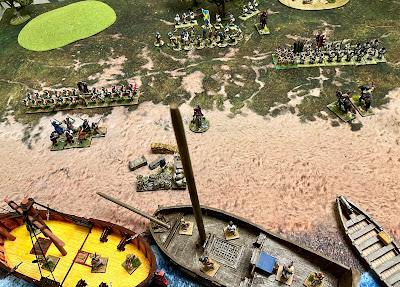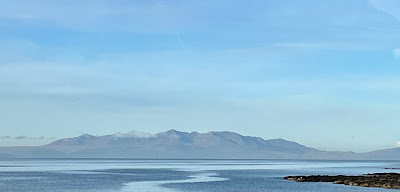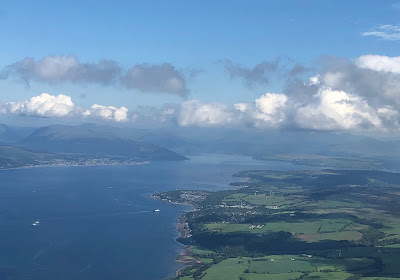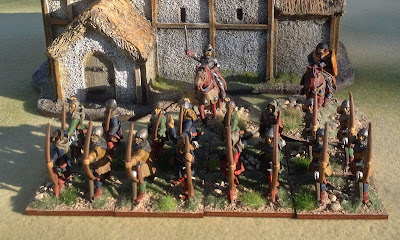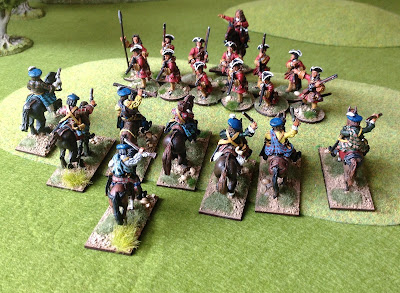As part of my research for the book I am writing about HMS Ambuscade, I came across this small action with much more significant consequences during the Jacobite Rebellion of 1745/46.
The first HMS Ambuscade (40) was a frigate built at Le Havre in 1745 for the French Navy as L'Embuscade. It was captured by HMS Defiance, a 58-gun fourth-rate ship of the line in the English Channel and taken to Plymouth. It was renamed HMS Ambuscade on 28 May 1746 after being refitted and up-gunned. She had a crew of 250 commanded by Captain Lucius O’Brien. He was commissioned as a Lieutenant in 1737 and served in the Russian Navy in 1739, which was not an uncommon career path then. He returned to serve in the Royal Navy in March 1744, commanding HMS Portsmouth (24) with the rank of Commander.
In December 1745, O'Brien was promoted to Captain of HMS Sheerness (24). His ship played a role in defeating the Jacobite Uprising by capturing the sloop Le Prince Charles (14) (the renamed Le Hasard) off the north coast of Scotland near the Kyle of Tongue on 25 March 1746. The French ship carried £13,000 in gold, weapons and supplies for the Jacobites. The money was subsequently taken by government troops on land from Lord Loudon’s Regiment and loyalist clansmen led by Lord Reay in an action known as the Skirmish of Tongue.
This was severe blow to the Jacobite cause because Prince Charles was out of cash and had no means of paying his troops. Morale dived and desertions accelerated. It also meant that Prince Charles could not advance on Aberdeen as planned forcing him behind the Spey and eventual defeat at Culloden. It also illustrates the divided loyalties, not just in the Lowlands but the Highlands as well. When I last visited the Culloden battlefield, I was standing next to a father explaining to his son that they were standing where the English shot the Scots. I had to politely explain that he was standing on the line held by a Scots regiment fighting for the Government forces.
The report in the London Gazette said:
‘Captain O'Brian of Sheerness man of war, now off this place giving an account that after chasing the Le Prince Charles above 56 leagues he drove her ashore and obliged the French and Spaniards who were in her to quit her and to land, which they did with five chests of money to the value of £12,000 and upwards.’
I thought the action on land might make an interesting midweek game using the Rebels and Patriots rules. The Gazette takes up the story on land:
"Lord Reay (Mackay) in whose country they were landed and whose house Captain Mackay, Sir Henry Munro, Lord [?Captain] Charles Gordon, and Captain MacLeod with some others of Lord Loudon's regiment were, with about 80 men of said regiment, who had been driven thither by the rebels, marched out and attacked them, and after killing three or four, and dangerously wounding eight, took the remaining 156, officers, soldiers, and sailors prisoners, who were immediately embarked on board the Sheerness, and the prize with the Highland officers and men who made the capture are now here.....The money that was landed out of the Hazard sloop, was taken by Lord Reay's men."
The principal commanders did well out of the action, receiving £700 each of the captured booty. The sergeants each received £50, and the privates each got £7 or £8, equivalent to eight or nine months' pay.
My Jacobite rebellion 28mm figures are mainly focused on the 1715 Rebellion, but I have some Seven Years War figures, and the Highlanders would look pretty similar. The Government army has two units of line, a unit of Mackay Highlanders and some mounted clansmen. The Jacobites have a French unit described as the 'cream of Berwick's Regiment', two units of Highlanders, a light cannon and a small command unit. All guarding the gold!
I have pasted a new photographic backdrop today, which although I bought it for Balkan settings, works well for the Highlands. I am very pleased with this and I have another to do. They are produced as model railway backdrops by a firm called Scaleology.






